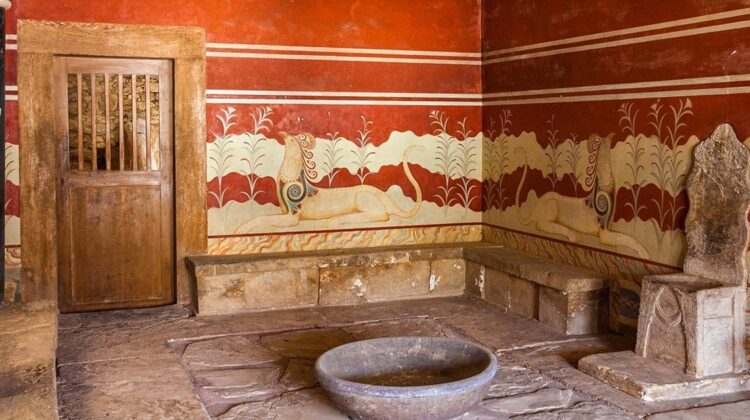
Nestled on the enchanting island of Crete lies the awe-inspiring ruin of an ancient palace that stands as a testament to the grandeur of the Minoan civilization. Today part of modern Greece, Crete was once the heart of the Aegean world, where the Minoans—pioneers of one of Europe’s earliest complex societies—flourished. Renowned for their majestic palaces and vibrant frescoes, the Minoans dominated the eastern Mediterranean during the Bronze Age, establishing far-reaching trade networks with Old Kingdom Egypt and Mesopotamian civilizations. At the pinnacle of this ancient splendor stands Knossos, a royal palace near the port of Heraklion, Crete, showcasing the zenith of Minoan culture.
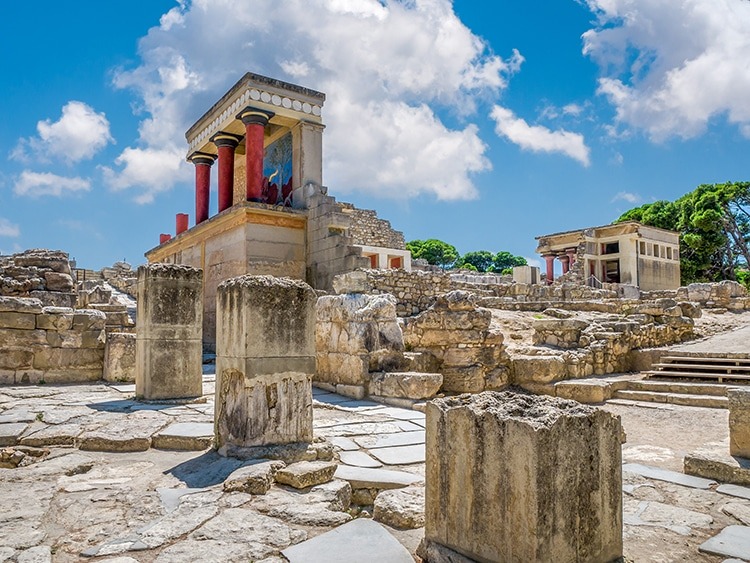
The Minoan civilization thrived from approximately 3000 BCE to around 1500 BCE, before it fell under the influence of Mycenaean Greece. The original palace at Knossos was erected around 2000 BCE but was ravaged by an earthquake circa 1720 BCE. The palace was subsequently rebuilt into the sprawling, labyrinthine marvel that endures today—a complex of frescoed chambers, magnificent columns, and serpentine stairways. Serving as both the administrative and ceremonial hub of Minoan society, Knossos was designed to accommodate a bustling populace and a thriving community.
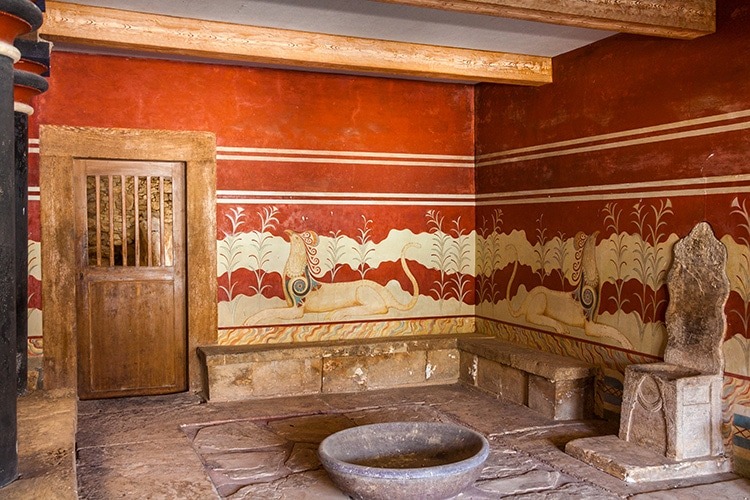
The palace’s ingenious design included extensive basement storage for essential goods such as wheat, oil, and precious artifacts. Artisans worked in specialized quarters, ensuring that the needs of the residents were met efficiently. Advanced plumbing systems, including drains, pipes, and paved roads, brought the luxuries of fresh water and easy transportation to the heart of Crete. The Minoans also developed an intricate writing system, transitioning from hieroglyphic script to Linear A, with inscriptions revealing the depth of their culture.
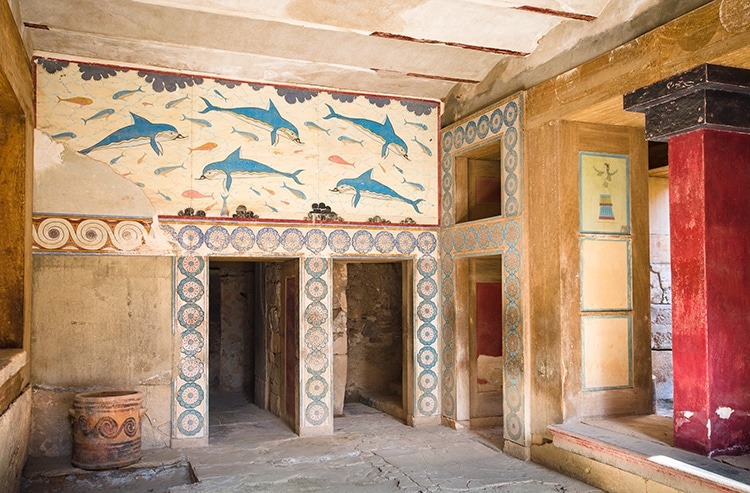
Among Knossos’ most astounding features is its throne room—believed to be the oldest intact throne room in Europe. This ceremonial chamber houses a gypsum stone throne, still on display today, and a mysterious stone bowl that may have been used in sacred rituals. The walls are adorned with mesmerizing frescoes depicting griffins, mythical creatures that hint at the room’s potential ceremonial use, possibly reserved for divine presence rather than daily governance.

The palace, boasting over 1,300 rooms, is a gallery of restored frescoes and painted columns, many of which have been meticulously preserved in recent decades. The famous dolphin fresco illustrates the importance of marine life to this coastal palace, while another fresco portrays the daring practice of “bull leaping,” where acrobats leapt over bulls in what might have been a ceremonial ritual celebrating these majestic animals.
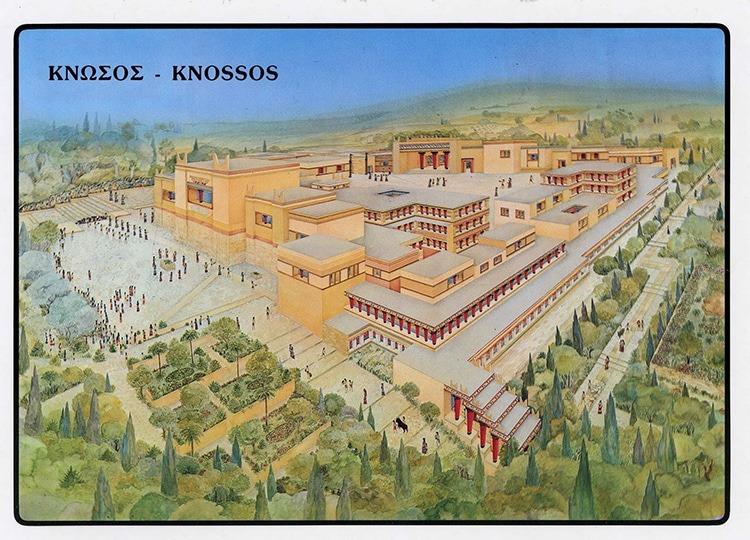
Knossos met its end in a dramatic fire—possibly ignited by earthquakes or Mycenaean invasions—after 1400 BCE. The site was rediscovered in 1878 by the pioneering archaeologist Minos Kalokairinos and was extensively excavated by the renowned British archaeologist Sir Arthur Evans in the early 20th century.
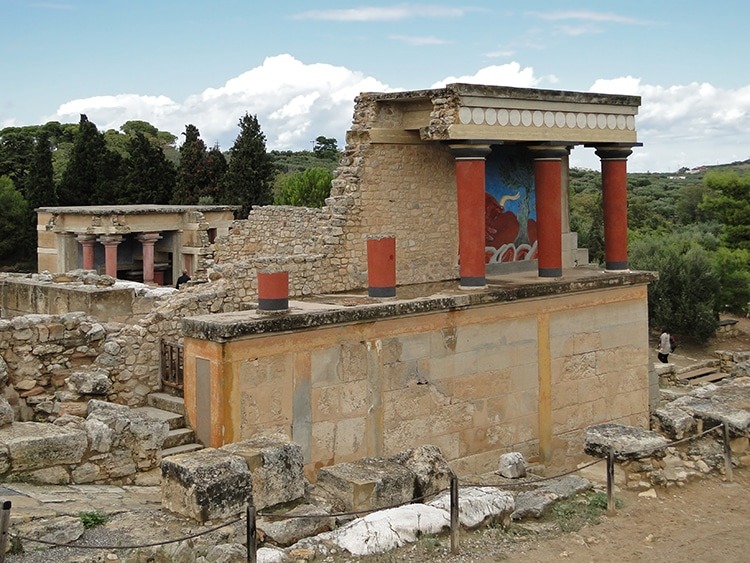
Today, Knossos is a mesmerizing destination for travelers and history enthusiasts alike. It, along with other Minoan palaces, is on the tentative list for UNESCO World Heritage Sites. Conveniently accessible from Heraklion on Crete, a region famed for its stunning blue beaches and rich historical tapestry, Knossos offers an unparalleled journey into one of Europe’s most remarkable ancient civilizations.
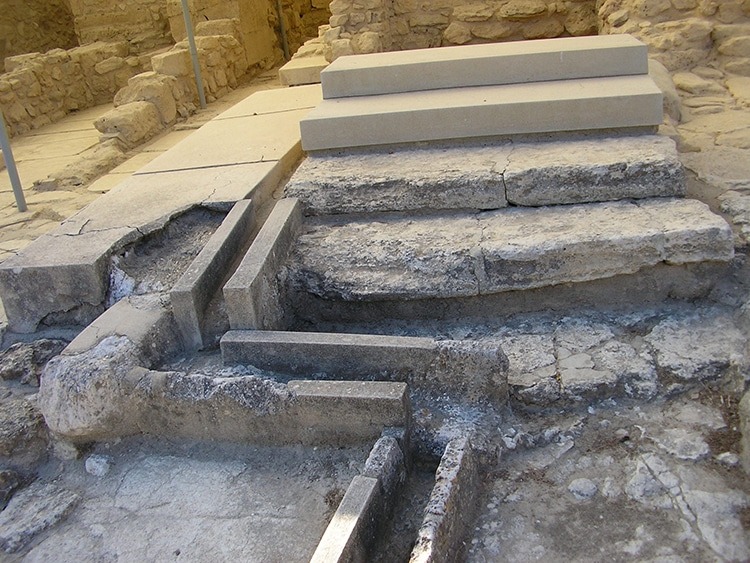
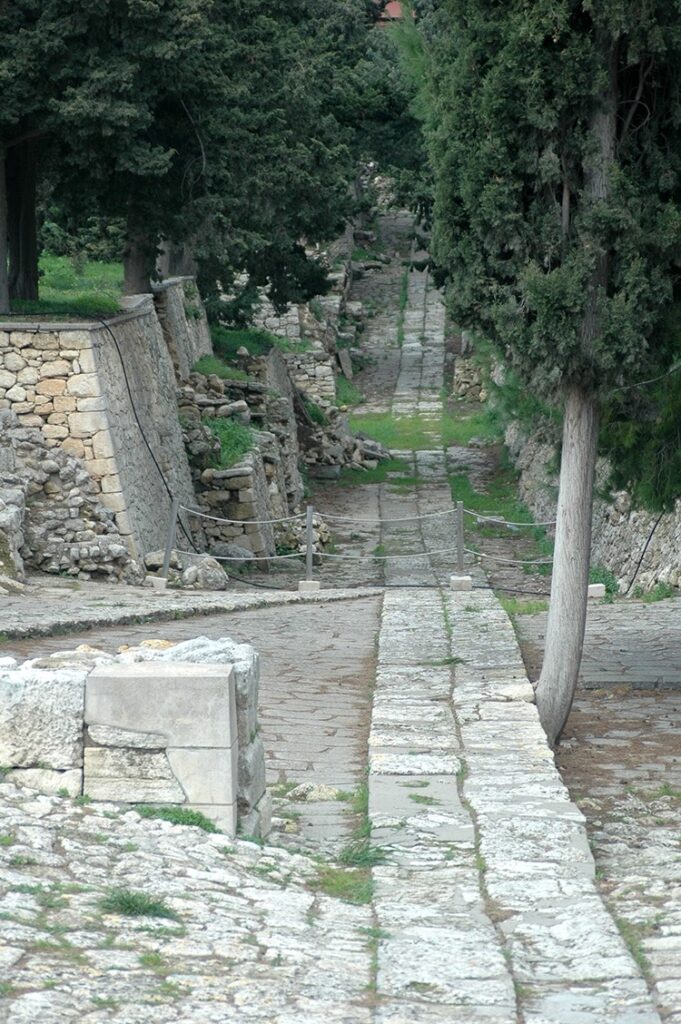
For a more immersive experience, explore renderings and photos of the ancient Knossos—a royal palace that continues to captivate and inspire with its enduring legacy.

Leave a Reply